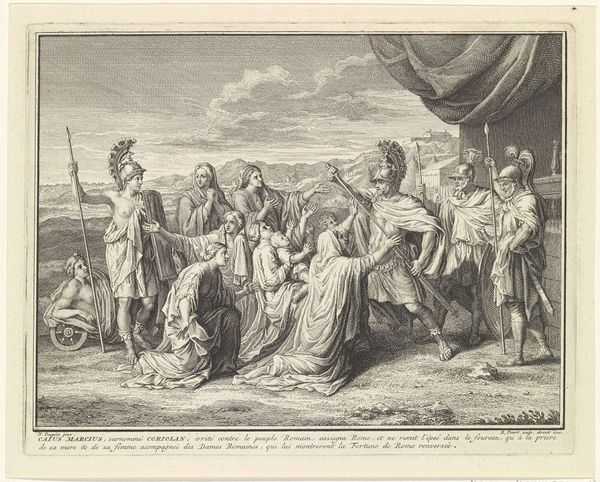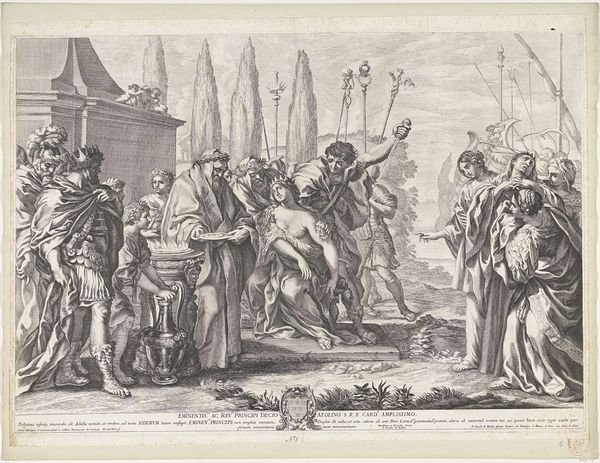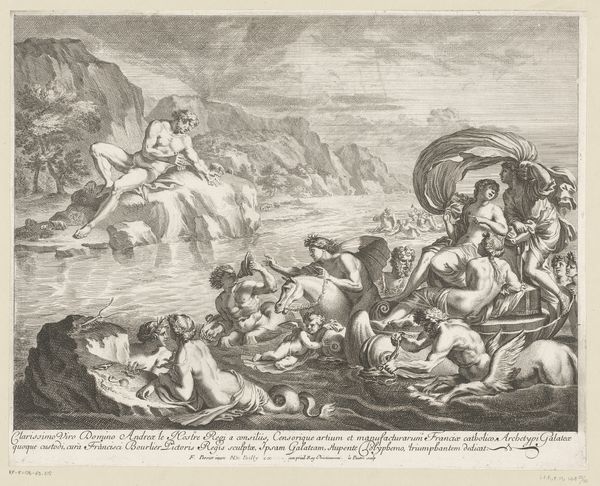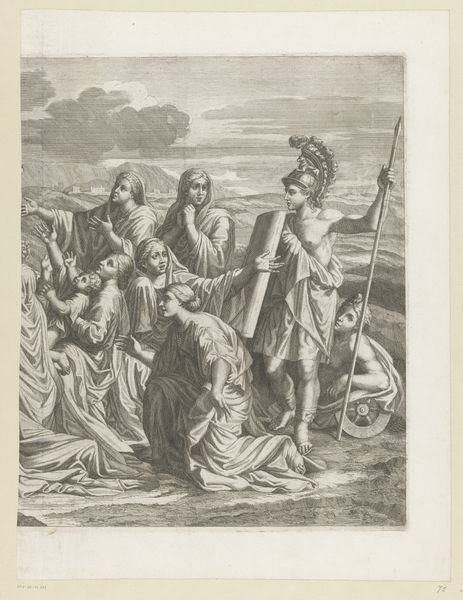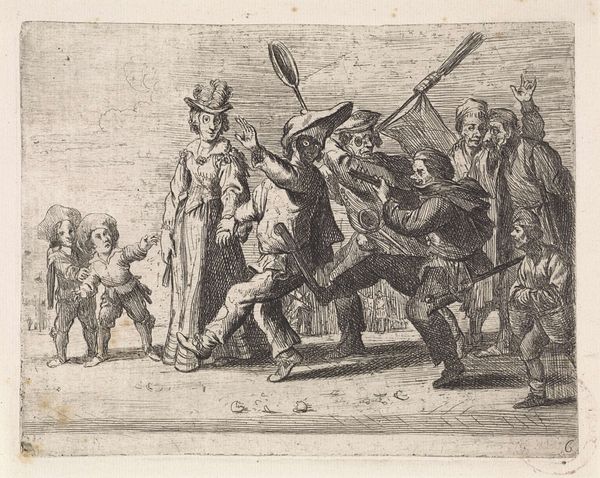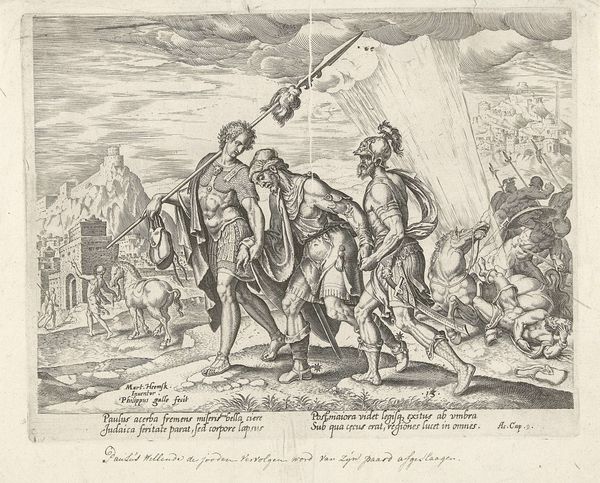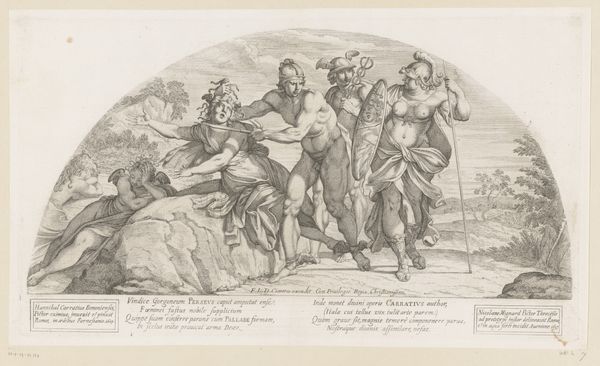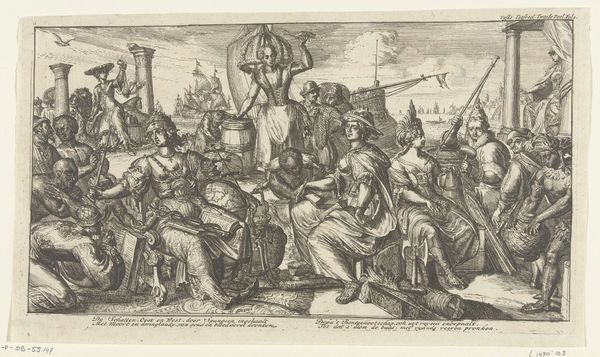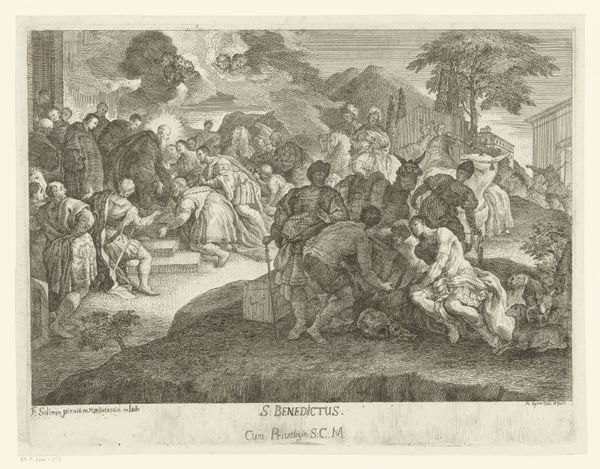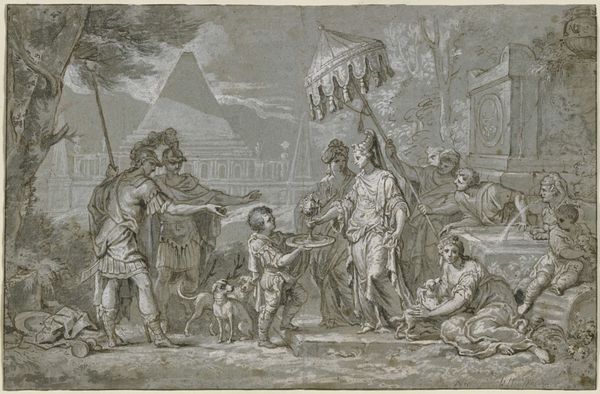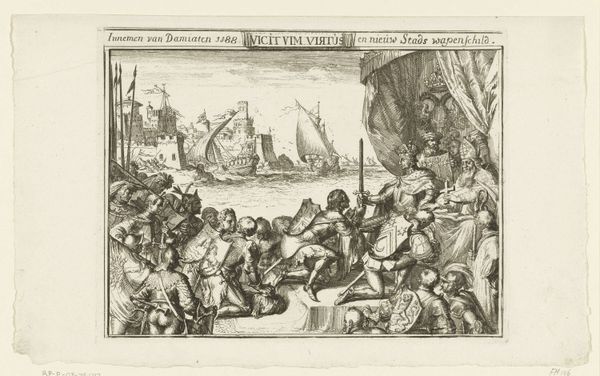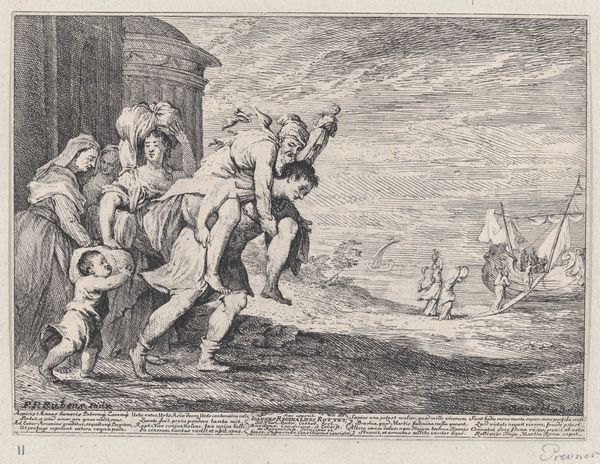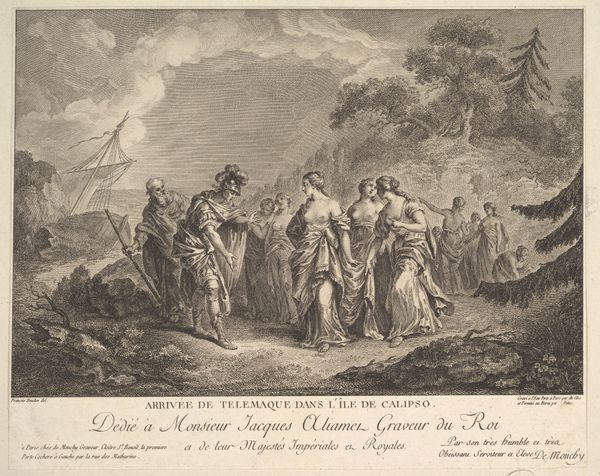
print, engraving
#
narrative-art
#
baroque
# print
#
old engraving style
#
figuration
#
line
#
history-painting
#
engraving
Dimensions: height 286 mm, width 591 mm
Copyright: Rijks Museum: Open Domain
Curator: Let's spend a moment with "Kruisdraging," or "Bearing of the Cross," an engraving created around 1752 by Georg Martin Preissler, currently housed at the Rijksmuseum. It captures a powerful moment, doesn't it? Editor: It’s stark. The light and shadow are really striking for a print. So much drama captured with simple lines...it almost vibrates. What sort of physical process are we talking about when an engraver like Preissler takes on such a challenging image? Curator: Engraving is demanding; it's a process of physically incising lines into a metal plate, which then holds the ink for printing. Consider the labor, the deliberate mark-making, all to replicate and disseminate an image—in this case, seemingly based on a painting by Veronese. There are labels written at the bottom of the image that give more details! Think of the multiplication inherent to printmaking as well! Each impression spreads the story and the aesthetic. It shifts the art into something accessible to more than one patron. Editor: So, this wasn’t meant to be some unique masterpiece, necessarily. It's about reproducing a painter’s original vision—in this case from Italian to the rest of the world, quite literally hammering out these narratives, making the spectacle accessible. It seems far away, in so many different dimensions. Curator: Indeed. Preissler's choice to work in engraving, with its crisp lines and high contrast, heightens the emotional intensity. He draws on the artistic traditions that Veronese began to depict agony, strength, community in this most painful human moment. How remarkable that a single artwork holds a single man's labor in it? Editor: Right. The engraver interprets Veronese, and we witness Preissler interpreting a particularly fraught passage in scripture in the 18th Century! The engraving becomes a container. But back to labor—I wonder, how did workshop economies and apprenticeships structure themselves? Curator: Apprenticeships were certainly vital; younger artisans would master craft, gain insight, work at different stages of reproduction, becoming fluent. They become parts of an expanding network. It is an artistic assembly line, with its own kind of intense pressure, wouldn’t you say? Editor: Exactly! Now, thinking about it that way opens up avenues I might never have explored. What about those distribution networks? That’s my big question... Thank you for the context, it makes it much richer than the drama apparent to the casual viewer. Curator: A real lesson, it turns out, in appreciating labor and the artistic networks across the ages. Thanks for sharing, it has been a learning experience!
Comments
No comments
Be the first to comment and join the conversation on the ultimate creative platform.
